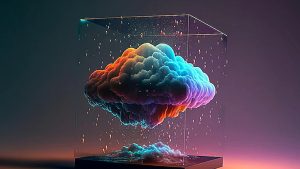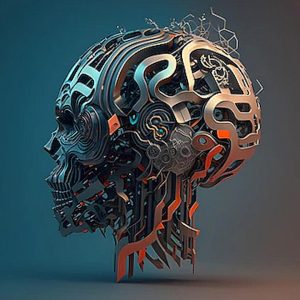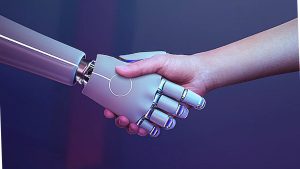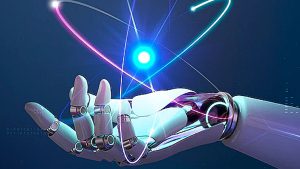Will ai replace artists?: The future of art and artificial intelligence (AI) has recently been a major issue of discussion. While some worry that this technology may harm the art world, others applaud AI’s strong creative ingenuity. Numerous cutting-edge AI technologies are producing mind-blowing literary and visual masterpieces. Applications like Midjourney, DALL-E 2, and ChatGPT let anybody with an internet connection to instantly construct whatever they can imagine.
Using machine learning methods to create creative compositions poses a basic question: Will artificial intelligence (AI) replace artists?
The simple reply is No.
Saying AI is capable of producing art is like to saying a pencil is capable of creating pictures or narratives. A pencil is a tool, not a person, just like AI is not human. Like every tool, the craft is defined by the person using its transformational powers; neither the medium nor the instrument define the craft.
Ironically, there is a conflict between AI and art. Although many authors and artists are afraid of AI, the truth is that it ultimately benefits them. Online philosophical debates and essays regarding whether art, literature, music, etc., can be produced by computers are currently all over the internet. More intriguing than pointless news and flimsy social media trends is the public discussion surrounding AI. AI is a crucial cultural development that will probably restore art to its origins.
Recommended: Countries With The Highest Number Of Prostitutes In The World 2023: Top 12
What is Art?
It might be challenging to define art in general. The Ultimate ChatGPT defines art as the imaginative expression of concepts, feelings, and narratives via a variety of media, including literature, music, painting, and more.This artificial intelligence-generated description of art makes sense. Expressing human traits accurately is what matters most, not necessarily the media or technology.

Given this, it makes sense why some individuals mistakenly think that information and visuals produced by artificial intelligence (AI) that are inspired by the thoughts, feelings, and experiences of others qualify as art.However, using AI to create artistic compositions is lacking several essential components. And that’s the self-control and self-awareness required for true artistic expression.
1. Art is Experience: Similar to how meditation or therapy may alter us, creating art is a means for many individuals to explore and express our emotions.That’s not to argue that by typing a few words and pressing a button in an AI program, someone can’t undergo a personal metamorphosis. The experience of making something that necessitates a close connection between our bodies and brains, however, cannot be compared to many other emotions.

Imagine how an artist feels after spending weeks creating an artwork. Or a writer who, after two years, finally finishes their manuscript. We emerge from these adventures as distinct individuals. Can the same be said for people who generate comparable works utilizing AI tools?The goal of the human experience and the notion that sometimes the trip counts more than the destination are missed by pragmatic thinking. This notion is true for both travel and art.
Recommended: How To Be a High Value Woman: 10 Important Traits
2. Art is Discipline: One of the many rewarding trials in life is improving as an artist. The more we engage in creative endeavors, the more we start to notice connections and storylines that were previously hidden from us. We improve our ability to communicate concepts, feelings, and stories through these new connections. One needs the discipline to train their creative mastery and observational abilities in order to reach this degree of attention. How we view the world and ourselves is altered by the creative processes.

Science and art share the idea of requiring us to study the world more carefully. But when we make art, we also observe our inner selves as well as the outside world. This behavior lets us develop new connections with our existence as we become more aware of everything around us, from how something makes us feel to how the light interacts with an object.
Ever try to draw a simple object like a water droplet? Most people who are not artists may draw an oval or circle, perhaps with some basic shading and highlights, and then add a little blue to finish it off.The different hues, reflections, colors, and highlights of a water droplet are dissected by an artist, who is examining the object. Even the effects of gravity are taken into account, along with light sources and shadows. Undeniably, they do not dye it blue.
Not recreating reality is the goal of creative activities. The real goal of displaying anything, like a water droplet, is to communicate a message or its essence. And in doing so, something as simple as a drop of water is transformed into an elaborate work of art that celebrates both nature and humanity.
Although AI may be capable of producing outstanding pictures or poetry that seem real, do you know the artist’s thoughts or circumstances at the time the work was produced? Or how and why they choose to include some information while excluding others? And how much self-control they required to succeed?
The distinction between excellent and terrible art The artist is the work. A focused artist successfully conveys significant experiences and captures the essence of human existence. Every phrase, musical note, and painting stroke is a window into the soul of the creator. Their songs tell a tale that was created by each of their own imaginations and life experiences.
We run the risk of becoming mindless, stupid, and boring slaves to technology if we don’t discipline ourselves to seek out and produce meaningful Art the way traditional artists have for thousands of years.
Recommended: How To Concentrate/Focus When Studying: 12 Tips
3. Art is Not a Commodity: Even before AI entered our life, the art world had become a highly commercialized, homogenized sector beset by egotism and avarice. The fact that anybody may use artificial intelligence to create art shows the ramifications of commercialized art. We’ve deluded ourselves into believing that anything that necessitates basic human attributes can be produced by a computer.

We have forgotten the purpose of art because our culture is so preoccupied with success and wealth. The distinctive meaning and aim of artistic compositions and creative works have been blurred by their worldwide commercialisation. We have become inattentive narcissists who are more concerned with meaningless likes than anything else thanks to social media platforms like Instagram, where many artists display their work. AI is only the cherry on top.
In many respects, it’s beneficial that AI is questioning the notion of what is considered to be art in the twenty-first century. Art may finally return to a discipline driven by beauty, expression, and discovery as machine learning methods are increasingly employed to produce soulless works.
Conclusion: The development of the electronic calculator or the spell-checker are not comparable to that of AI technology. This new technology will fundamentally change our civilization, including how we see art.
AI, on the other hand, will never be able to match the comfort, pride, and joy that come from making and appreciating good art. The best we can do to ease this existential crisis is to advocate for the notion that genuine art necessitates some level of creative ability and personal development.

Edeh Samuel Chukwuemeka, ACMC, is a lawyer and a certified mediator/conciliator in Nigeria. He is also a developer with knowledge in various programming languages. Samuel is determined to leverage his skills in technology, SEO, and legal practice to revolutionize the legal profession worldwide by creating web and mobile applications that simplify legal research. Sam is also passionate about educating and providing valuable information to people.